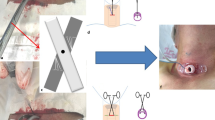Abstract
Purpose:
Percutaneous dilational tracheostomy (PDT) is increasingly being used to replace traditional surgical tracheostomy (ST) in the management of critically ill patients. There is considerable controversy regarding the safety of this procedure in the hands of non-surgeons, and most data so far have come from large tertiary care centres. We report our experience and safety data in the implementation of a PDT program for critically ill patients in a teaching community hospital in an attempt to demonstrate that this procedure can be performed safely outside of an academic ICU.
Methods:
Prospective observational study in a large community teaching hospital. All patients without contraindications were considered for enrollment. Contraindications to PDT included evidence of infection at the surgical site, the presence of a coagulopathy not correctable to an international normalized ratio of less than 1.5, or unstable cervical spine injuries. A total of 42 patients were included in the study and all received PDT using the Ciaglia Blue Rhino single dilator introducer set (Cook Critical Care, Bloomington, IN, USA). Data collected included patient age, sex, reason for intubation, and complications.
Results:
Of 42 patients, 25 were males, and 17 were females. The average age was 47.6 years (range 16–87 years). The commonest admitting diagnosis was traumatic brain injury, followed by sepsis and cardiac arrest. Our total recorded complication rate was 7.1%, with no deaths. There were two episodes of transient hypotension (4.8%).
Conclusion:
Percutaneous dilational tracheostomy appears to be at least as safe as traditional ST, and may have advantages with respect to timeliness and minimization of patient transport. The complication rate seen in our program is similar to that seen in other PDT series.
Similar content being viewed by others
Author information
Authors and Affiliations
Corresponding author
Additional information
Implication Statement: Tracheostomies in critically ill patients are traditionally performed by surgeons in an operating room. The technique of percutaneous dilational tracheostomy (PDT) at the bedside by non-surgeons may have significant benefits with respect to timeliness and quality of patient care. Most PDT programs have been developed at large teaching hospitals. We review our experience at a community hospital and review the evidence surrounding PDT by non-surgeons.
Rights and permissions
About this article
Cite this article
Henderson, W. Percutaneous Dilational Tracheostomy in a Community Intensive Care Unit. Eur J Trauma Emerg Surg 34, 294–298 (2008). https://doi.org/10.1007/s00068-007-6126-5
Received:
Accepted:
Published:
Issue Date:
DOI: https://doi.org/10.1007/s00068-007-6126-5




